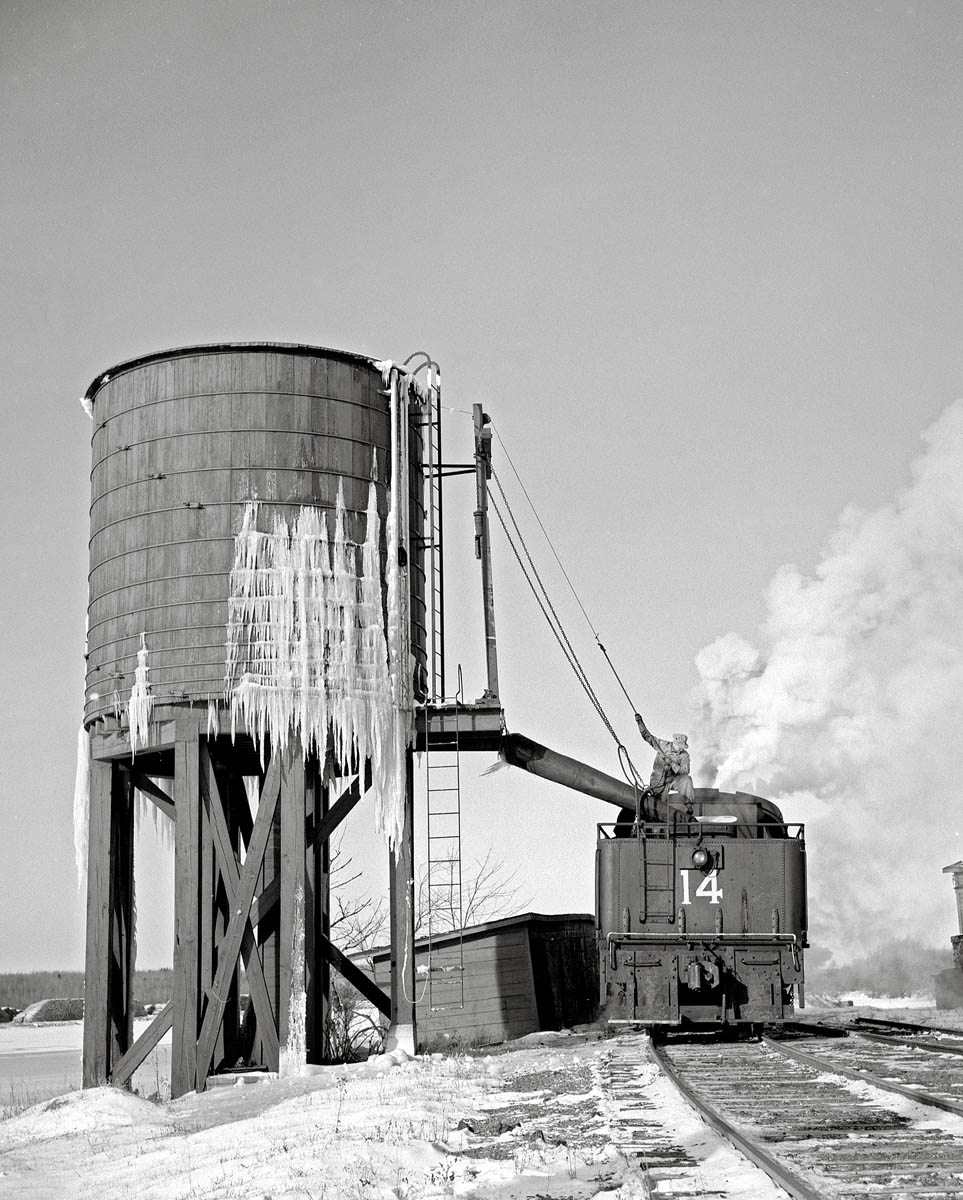A Many water towers in colder climates had circulation pumps to keep water moving within the tower, making freezing more difficult. A pump would take water from near the bottom of the tank, and move it through a standpipe within the tank to near the top.
Many tanks were also heated by steam from a pump house or a coal stove under an enclosed base. It kept the pipes, pumping machinery, and the tanks themselves warm during the winter months.
In Canada, some railroads used octagonal shaped water tanks. The exterior octagonal shape was a separate structure that enclosed the tank, and included a stove that could be lit to warm the interior and keep the tank from freezing.
Some tanks in colder climates were also insulated, creating what was essentially a tank within a tank, with insulation filling the gap. In some colder states, such as Maine, the water tanks were in fully enclosed insulated buildings and had coal heaters.
In busier locations, however, freezing was not an issue because locomotives used the water in the tanks so fast, and it was replaced by other warmer water without a chance to freeze. – Steve Glischinski














